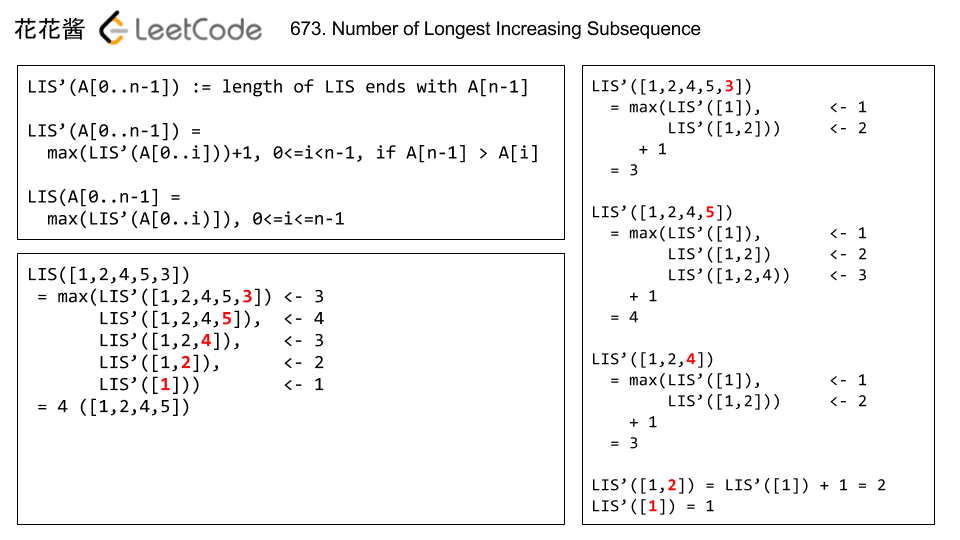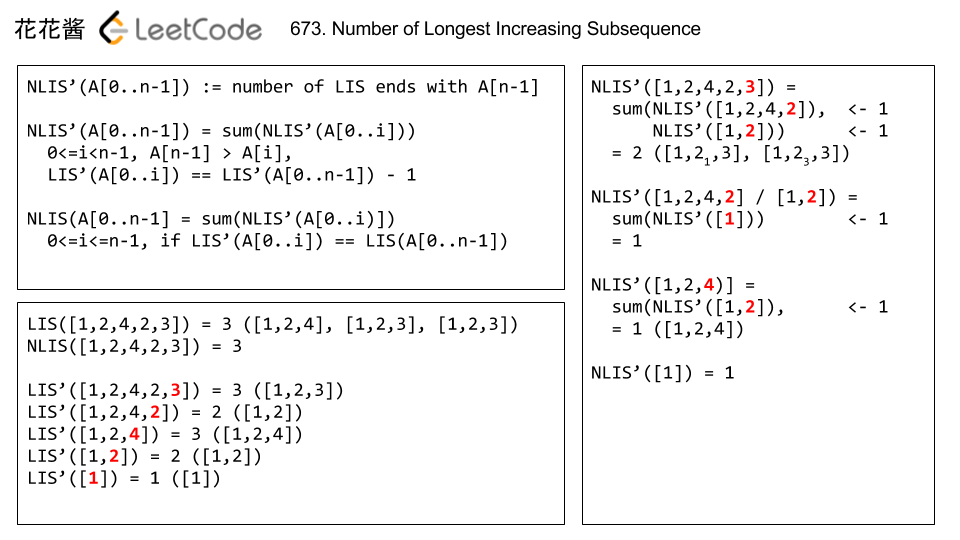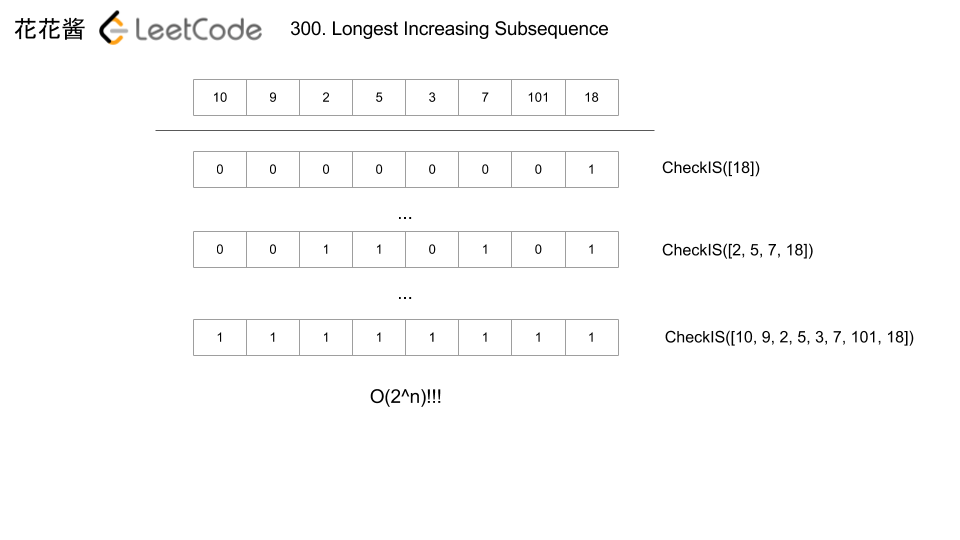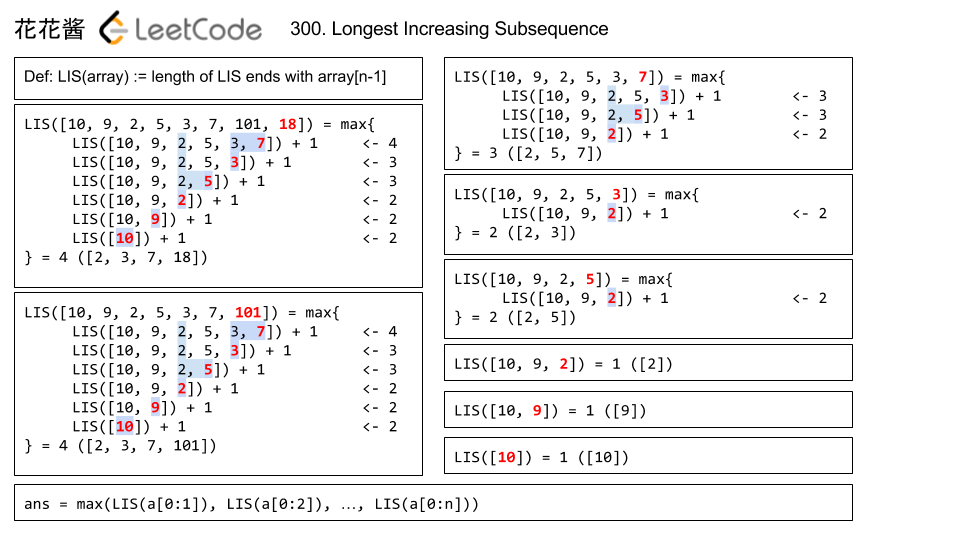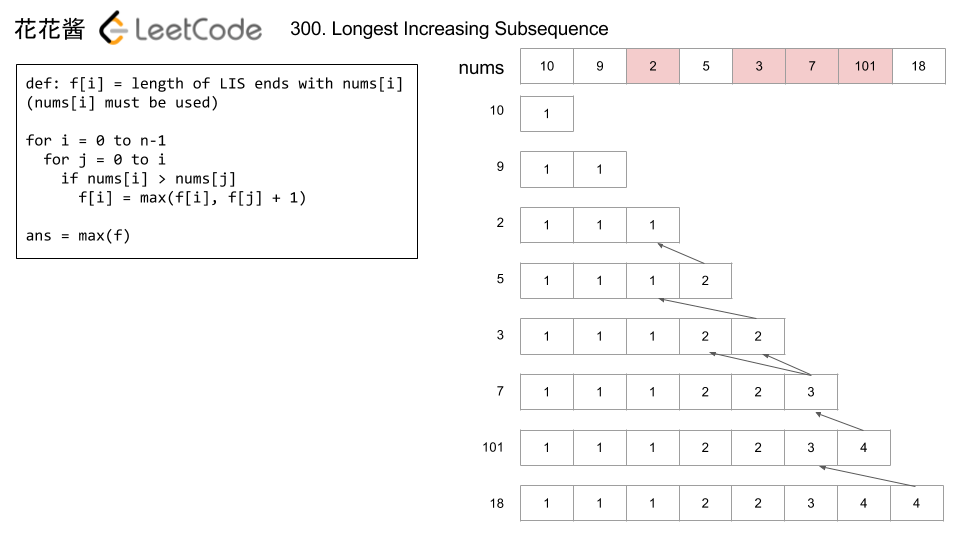You are given a 0-indexed array arr consisting of n positive integers, and a positive integer k.
The array arr is called K-increasing if arr[i-k] <= arr[i] holds for every index i, where k <= i <= n-1.
- For example,
arr = [4, 1, 5, 2, 6, 2]is K-increasing fork = 2because:arr[0] <= arr[2] (4 <= 5)arr[1] <= arr[3] (1 <= 2)arr[2] <= arr[4] (5 <= 6)arr[3] <= arr[5] (2 <= 2)
- However, the same
arris not K-increasing fork = 1(becausearr[0] > arr[1]) ork = 3(becausearr[0] > arr[3]).
In one operation, you can choose an index i and change arr[i] into any positive integer.
Return the minimum number of operations required to make the array K-increasing for the given k.
Example 1:
Input: arr = [5,4,3,2,1], k = 1 Output: 4 Explanation: For k = 1, the resultant array has to be non-decreasing. Some of the K-increasing arrays that can be formed are [5,6,7,8,9], [1,1,1,1,1], [2,2,3,4,4]. All of them require 4 operations. It is suboptimal to change the array to, for example, [6,7,8,9,10] because it would take 5 operations. It can be shown that we cannot make the array K-increasing in less than 4 operations.
Example 2:
Input: arr = [4,1,5,2,6,2], k = 2 Output: 0 Explanation: This is the same example as the one in the problem description. Here, for every index i where 2 <= i <= 5, arr[i-2] <=arr[i]. Since the given array is already K-increasing, we do not need to perform any operations.
Example 3:
Input: arr = [4,1,5,2,6,2], k = 3 Output: 2 Explanation: Indices 3 and 5 are the only ones not satisfying arr[i-3] <= arr[i] for 3 <= i <= 5. One of the ways we can make the array K-increasing is by changing arr[3] to 4 and arr[5] to 5. The array will now be [4,1,5,4,6,5]. Note that there can be other ways to make the array K-increasing, but none of them require less than 2 operations.
Constraints:
1 <= arr.length <= 1051 <= arr[i], k <= arr.length
Solution: Longest increasing subsequence
if k = 1, we need to modify the following arrays
1. [a[0], a[1], a[2], …]
if k = 2, we need to modify the following arrays
1. [a[0], a[2], a[4], …]
2. [a[1], a[3], a[5], …]
if k = 3, we need to modify the following arrays
1. [a[0], a[3], a[6], …]
2. [a[1], a[4], a[7], …]
3. [a[2], a[5], a[8], …]
…
These arrays are independent of each other, we just need to find LIS of it, # ops = len(arr) – LIS(arr).
Ans = sum(len(arri) – LIS(arri)) 1 <= i <= k
Reference: 花花酱 LeetCode 300. Longest Increasing Subsequence
Time complexity: O(k * (n/k)* log(n/k)) = O(n * log(n/k))
Space complexity: O(n/k)
C++
|
1 2 3 4 5 6 7 8 9 10 11 12 13 14 15 16 17 18 19 20 21 22 23 24 |
// Author: Huahua class Solution { public: int kIncreasing(vector<int>& arr, int k) { auto LIS = [](const vector<int>& nums) { vector<int> lis; for (int x : nums) if (lis.empty() || lis.back() <= x) lis.push_back(x); else *upper_bound(begin(lis), end(lis), x) = x; return lis.size(); }; const int n = arr.size(); int ans = 0; for (int i = 0; i < k; ++i) { vector<int> cur; for (int j = i; j < n; j += k) cur.push_back(arr[j]); ans += cur.size() - LIS(cur); } return ans; } }; |
Python3
|
1 2 3 4 5 6 7 8 9 10 11 12 13 |
# Author: Huahua class Solution: def kIncreasing(self, arr: List[int], k: int) -> int: def LIS(arr: List[int]) -> int: lis = [] for x in arr: if not lis or lis[-1] <= x: lis.append(x) else: lis[bisect_right(lis, x)] = x return len(lis) return sum(len(arr[i::k]) - LIS(arr[i::k]) for i in range(k)) |


